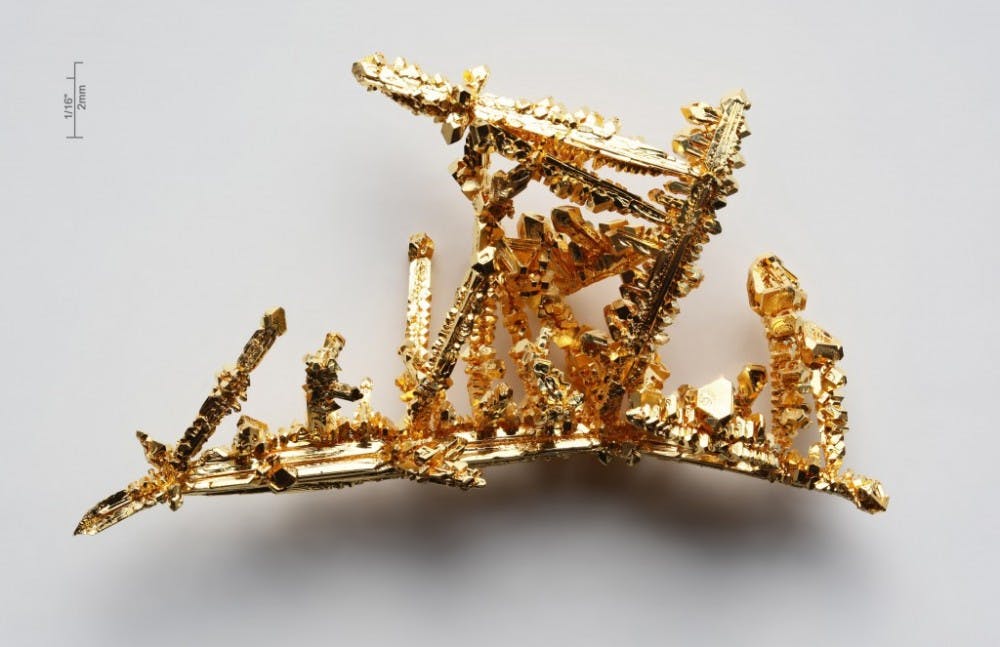While many might believe it’s the shiny surface that sets gold apart from the other earth metals, the uniqueness of this metal can actually be traced all the way back to its creation. Most elements such as carbon and iron are created within a star through slow natural processes. Gold, on the other hand, as well as other heavy metals, requires a much more extravagant, cataclysmic event.
Scientists are still searching for the complete story behind the formation of heavy earth metals, but they have narrowed down the possibilities to two likely sources. Michigan State University (MSU) researchers along with colleagues from Technische Universität Darmstadt, Germany are currently using computer model simulations to investigate the two possibilities: a supernova collapse and the collision of two neutron stars.
“At this time, no one knows the answer,” Witold Nazarewicz, a professor at the MSU-based Facility for Rare Isotope Beams (FRIB), said in a press release. “But this work will help guide future experiments and theoretical developments.”
Supernova stars are incredibly massive, old stars that are known to collapse in their old age. Neutron stars are the remnants of past supernova and are incredibly dense and small. When they collide, stellar material is ejected into space at 10 to 50 percent of the speed of light. The researchers use high performance computing to mimic the production of heavy metals in both cataclysmic events.
“Our work shows regions of elements where the models provide a good prediction,” Nazarewicz, a Hannah Distinguished Professor of Physics who also serves as the FRIB’s chief scientist, said. “What we can do is identify the critical areas where future experiments, which will be conducted at FRIB, will work to reduce uncertainties of nuclear models.”
Researchers first began seriously exploring the possibility of a neutron star collision as the source of heavy metal creation after observing a gamma ray burst from a collision in June 2013.
The collision, as well as its aftermath, was studied by Edo Berger and his colleagues at the Harvard-Smithsonian Center for Astrophysics (CfA). It was detected on June 3 and lasted less than two-tenths of a second. What was of particular interest was the gamma-ray burst (GRB) resulting from the collision.
A gamma-ray burst is essentially a high-energy light energetic explosion. Such events often take place in the distant universe over 3.9 billion light years from earth and come in two varieties, long bursts and short bursts. The burst resulting from the 2013 collision was given the name 130603B.
“We’ve been looking for a ‘smoking gun’ to link a short gamma-ray burst with a neutron star collision. The radioactive glow from GRB 130603B may be that smoking gun,” Wen-fai Fong, a graduate student at the CfA at the time and a co-author of the paper, said in a press release.
While most gamma rays usually disappear quite quickly, GRB 130603 was unique in that after the burst, the researchers observed a fading infrared light. Such emissions are atypical of the afterglow usually caused by high-speed jets of particles slamming into the surrounding environment.
Instead, the glow behaved like that of radioactive elements, suggesting the neutron rich material ejected from the collision could generate elements that undergo radioactive decay, like gold.
“We estimate that the amount of gold produced and ejected during the merger of the two neutron stars may be as large as 10 moon masses — quite a lot of bling!” Berger, lead author of the study, said in a press release.
Perhaps the most convincing evidence at that time were the mathematical estimates performed by the researcher team. Approximately one one-hundredth of the solar mass of the two stars in a neutron star collision is ejected as material by the GRB. By combining the estimated amount of gold produced by a single short GRB and the total number of GRB explosions that have occurred in the cosmos, the researchers were confident it could be possible to account for all the gold in the universe.





